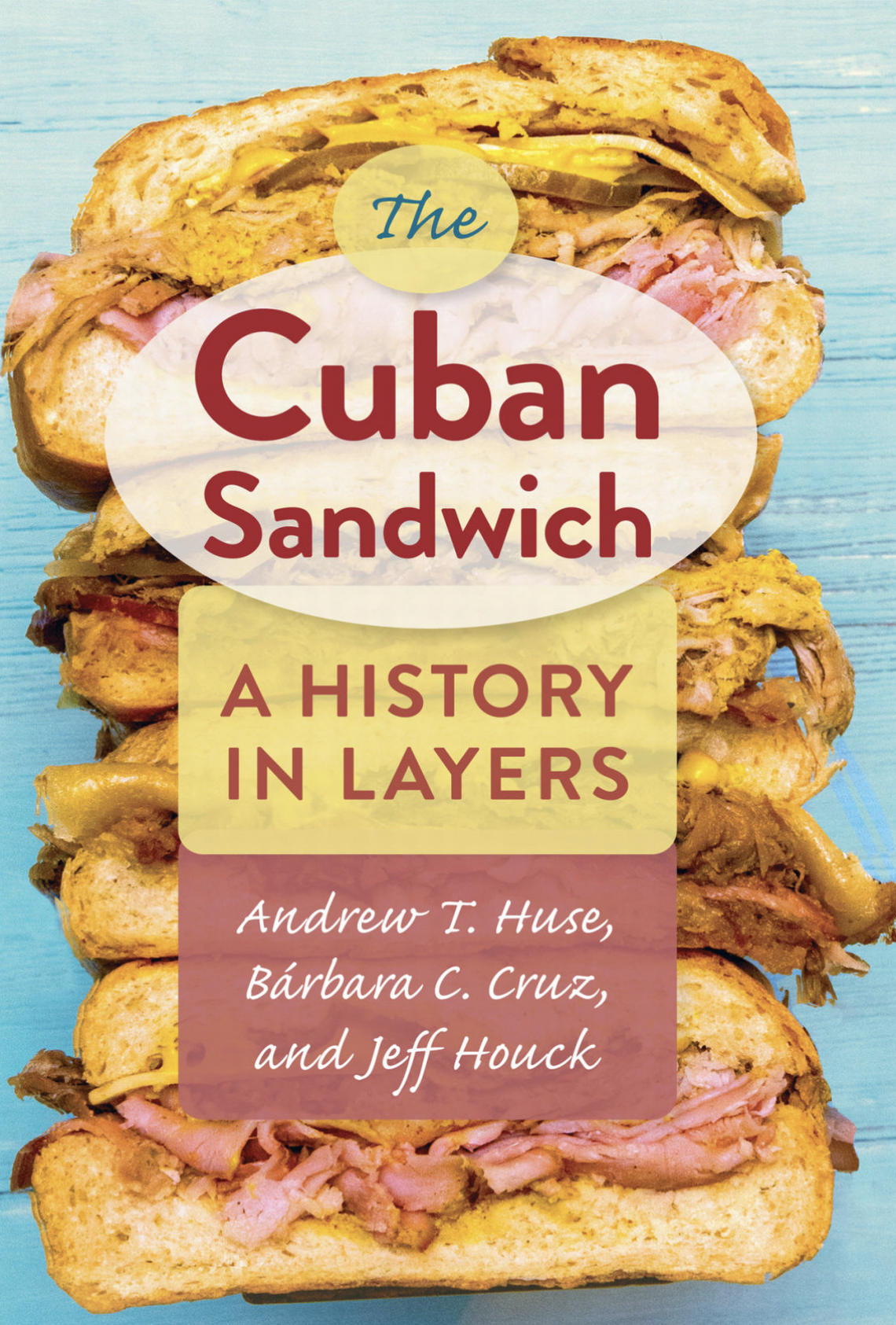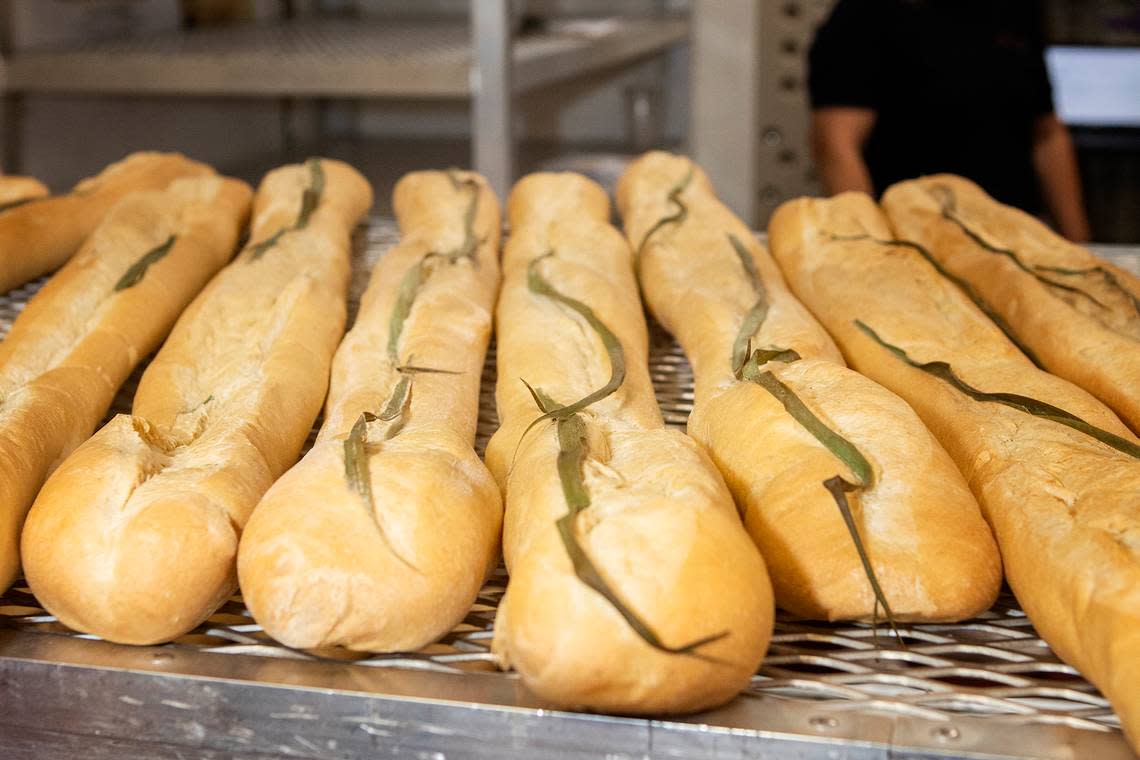Did New York help invent the Cuban sandwich? New research adds fuel to the debate
Andrew Huse was sick of the same, tired debate regarding the origin of the Cuban sandwich.
Tampa! No, Miami! Key West!
The arguments always seem to devolve into provincial ties, personal experience, and are usually subject to the unreliable nature of memory.
Rarely were the fights about facts.
“No one has said anything new in that debate,” Huse said. “In fact, that debate has made us understand the [story of the] Cuban sandwich much less.”
An archivist and historian for more than 20 years at the University of South Florida’s special collections, Huse set out to trace the history of the Cuban sandwich, wherever it might lead. Huse did what those yelling outside the ventanita have not — research.

His new book, “The Cuban Sandwich: A History in Layers” (University Press of Florida, $25, out Sept. 2) makes it clear the story of the Cuban sandwich is as mixed up and nuanced as the flavors of the sandwich. And that versions of the sandwich seemed to pop up around the same time, the turn of the 20th century, in enclaves of Cuban exiles — of different generations — including Tampa, Key West, New Orleans, even New York City.
Ultimately, its origins lead to Havana.
“I can tell you it came from Havana — invented by Cubans, for Cubans — and the rest of the world discovered it and fell in love with it,” he said.
Huse, born in Chicago but raised in Tampa, pored over more than 150 years of documents, from Cuba, the United States and beyond: advertisements, restaurant menus, newspaper articles, dating back to the 1870s. He annotated his work with more than 10 pages of footnotes, many including tangential stories to add context and entertainment in a way that would make David Foster Wallace proud.
His task required help. He enlisted a pair of experts as co-authors, USF professor Bárbara C. Cruz, who was born in Cuba, raised in Miami and lives in Tampa, and former Tampa Tribune food editor and writer Jeff Houck, who handles publicity for the Tampa-based Columbia Restaurant Group.
Their book reveals a sandwich that started as a treat for the elite, as well-to-do Cubans in the “Pearl of the Antilles” took pop cultural cues from other cosmopolitan cities. Sandwiches were not the egalitarian street food but a crust-less bite for the upper crust. And Cubans on the island had plenty to work with, as refrigeration allowed them to import and develop their own cold cuts and pile them on versions of their own Cuban bread.

There was little consensus on what made up a Cuban sandwich early on. Ham and pork were always in, mustard and pickles almost without fail. But so too was a second or third ingredient, always in flux: liver pate, mortadella, bologna, sausage, chicken, chorizo, and yes, salami. Turkey was perhaps the most popular addition, the authors write.
Wartime rationing — during the Spanish-American War, World War I, World War II — affected what meats were available, as well as the shape of the bread. Cuban bread went from rolls to a round loaf to the long, skinny flautas we know today. And those wars always seemed to produce exiles — fleeing generations of wars and dictators like Gerardo Machado to Fulgencio Batista to Fidel Castro — who took their palates to different cities, including New York, where freedom fighter José Martí was once exiled. In 1901, the New York Times called a Cuban sandwich something like a club sandwich, including turkey but not the third slice of bread.
The book is told in clean, bright prose, a pleasure to read even for those who “beat the drum” for their particular city, Huse said.
Key West gets credit in the book (though there is less documentation available) for being the closest counterpart to Havana and most influenced by its food. Tampa gets credit for preserving the tradition of Cuban bread and for setting up the cigar factories that became a new hope for generations of early Cuban exiles from Havana and even Key West. There the Gonzmart family has been overseeing the Columbia Restaurant for four generations, since 1905, where they make Tampa’s salami-inflected variety (four slices of imported Genoa with peppercorns) on La Segunda Bakery’s traditional flauta (complete with palm leaf).
“The Cuban sandwich that people fell in love with found its voice here in Tampa,” co-author Houck said. “People will be surprised with the depth of Andy’s research. I know I was.”
Miami gets the credit for popularizing the sandwich. With the greatest concentration of Cuban exiles, who fiercely fought to protect their imported culture from the island, Miami Cubans helped standardize for the world what should and shouldn’t go in a Cuban sandwich. (Sorry, turkey. Save it for the Elena Ruz.)
“Miami is the capital of the Cuban sandwich, let’s face it,” Huse said.
But the trio isn’t closing the book on the Cuban sandwich origin story. The writers concede “politics and pandemic” kept them from researching on the island, and Huse said he would love to take a team of students to delve further into the facts.
The most graceful line in the book is the kicker to the introduction: “We encourage others to build upon our efforts when more information becomes available.”
What is available makes one thing plainly clear about the history of the sandwich. It’s a sandwich born of Cubans, wherever they may be.
“While they have shared it with the world,” the authors write, “the sandwich will always belong to the exile, and perhaps one day, to all Cubans again.”
